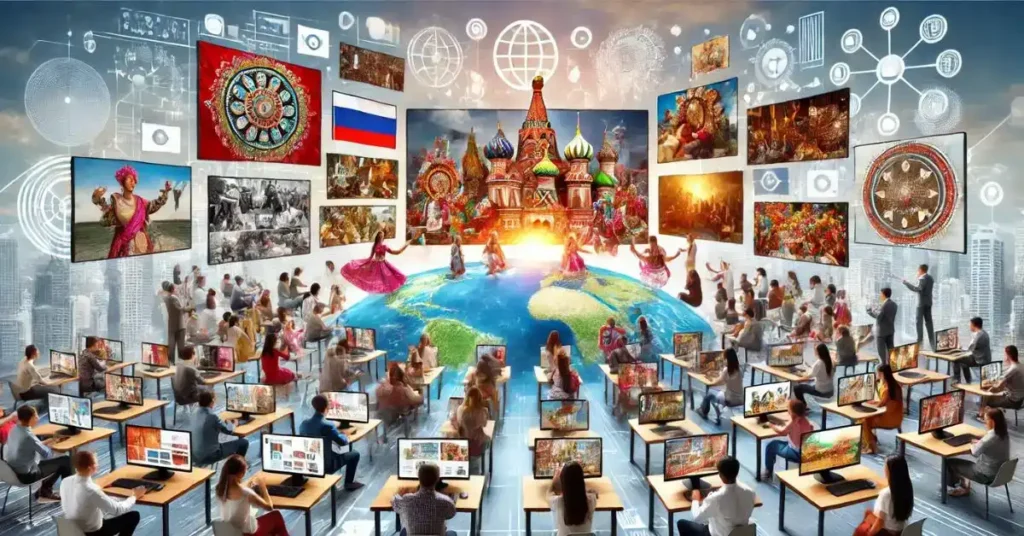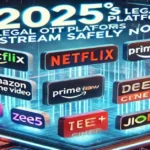The entertainment industry is in a state of flux. Digital tools, evolving consumer behaviour, new platforms and emerging technologies are combining to reshape everything from how content is made, to how it’s delivered, to what people expect from it. While traditional models aren’t disappearing overnight, many of them have been upended, and new dynamics are steadily taking root. Let’s examine the major dimensions of change, what they mean, and what to watch out for.
1. From Scheduled Programs to On‑Demand & Streaming
One of the most visible shifts has been away from linear TV, movie theatres, and rigid release schedules — toward streaming services and on‑demand content. Audiences now expect to access content anywhere, anytime, and binge‑watching (entire seasons released at once, or multiple episodes released rapidly) has become normal. Hubvela+2Cooper Magazine+2
-
Greater control for consumers: Users decide what to watch and when, rather than being tied to broadcasting schedules or cinema show‑times.
-
More content variety & niche stories: Streaming services (both global and regional) are producing original content that targets more specific audiences—e.g. regional language, different genres, or underserved demographics. barnorama.com+2Quzeo+2
-
Blurring of distribution roles: Platforms are no longer just distribution channels; many are now funding and producing content themselves, competing with traditional studios.
2. Democratization of Creation & Rise of User‑Generated Content
Technology has lowered the barriers to entry for content creation. You no longer need a big studio, huge budgets, or specialised gear to reach a global audience. Smartphones, editing tools, social media, and digital platforms allow independent creators, vloggers, streamers, influencers to:
-
Create and share their own content directly.
-
Build followings and communities.
-
Monetize via ads, subscriptions, sponsorships, crowdfunding, etc. Global Media Journal+2barnorama.com+2
This shift has widened the diversity of voices and formats in entertainment. It also means traditional gatekeepers have less control over what gets seen or becomes popular.
3. Data, Algorithms & Personalization
Digital platforms collect large volumes of data about what users watch, listen to, when, and how. These insights are used to:
-
Recommend content tailored to individual tastes.
-
Decide what kinds of shows or music to produce (based on what viewers are engaging with).
-
Guide marketing, release timing, and platform design. Global Media Journal+2arXiv+2
Algorithms are now central to discovery. For many consumers, what gets suggested by the streaming service or platform makes a big difference in what they end up consuming.
4. New Technologies: VR / AR / Blockchain / AI
The digital age brings with it new technologies that are pushing the boundaries of experience and business models.
-
VR / AR / Mixed Reality: These offer immersive experiences — virtual concerts, augmented reality layers, interactive storytelling. While still niche, their possibilities are growing. Orah+3Hubvela+3Miquido+3
-
5G and Connectivity: Faster networks and lower latency mean streaming high‑quality content (video, VR) is more practical, and live or interactive formats become more viable. Miquido+2Gitnux+2
-
Blockchain / NFTs / Web3: Exploring better ways to manage rights, reduce piracy, enable new monetization (collectibles, tokenization). Marshmallow Challenge Blog+1
-
AI in production & editing: AI tools are being used to automate or assist in tasks like editing, personalization, even generating content. This raises both opportunity (efficiency, scale) and concerns (authenticity, ethical use). Global Media Journal+2arXiv+2
5. Changing Revenue & Business Models
As the modes of consumption change, so do how entertainment is paid for and monetised.
-
Traditional revenue sources like cable subscriptions or box office receipts are being complemented (and sometimes replaced) by:
-
Subscription streaming models (SVOD)
-
Ad‑supported streaming (AVOD / hybrid models)
-
Direct‑to‑consumer offerings
-
-
Advertising is becoming more digital and more targeted. AI‑powered ads and personalized ad experiences are increasing. Reuters+2Miquido+2
-
New revenue through digital ownership / collectibles / fan monetization (e.g., patronage, microtransactions).
-
Global reach means platforms and content creators can address wider markets — increasing scale but also increasing competition.
6. Impact on Traditional Distribution & Theatrical
While streaming dominates many areas, traditional media (cinema theatres, broadcast networks) are being forced to adapt rather than vanish.
-
Theaters are offering experiences that streaming cannot replicate: IMAX, 3D, luxury seating, events, premiere exclusives. Quzeo+1
-
Release windows (the time between theater release and digital release) have shortened or become more flexible. Sometimes films move to streaming much sooner, or even simultaneous release (in some geographies).
-
Broadcasters are increasingly investing in digital platforms, catch‑up services, or launching their own OTT offerings.
7. Challenges & Risks
With these opportunities come non‑trivial challenges:
-
Content saturation: So much content is being created that standing out is harder. Audience attention is a scarce resource.
-
Quality vs quantity: Producing high quality content requires investment and talent; pushing out large volumes cheaply risks diluting value or tiring audiences.
-
Monetization pressure: Not all content creators or platforms succeed. Ad revenues, subscription prices, production costs, and competition put pressure on profitability.
-
Rights, piracy, and regulation: Digital distribution raises issues around licensing, intellectual property, content rights across borders, and ensuring creators get fair compensation.
-
Ethical questions: Use of AI, deepfakes, face‑doubles, or digital replicas (e.g. altering actors’ appearances) raises concerns over consent, authenticity, creative control.
-
Platform dependency: Creators often depend heavily on platform algorithms, visibility, or revenue share conditions, which may change.
8. What This Means for Creators, Audiences & Industry Players
For Creators:
-
Being flexible and nimble matters. Understanding what platforms want, what audiences are responding to, and adapting storytelling formats helps.
-
Building direct relationships with audiences (via social media, own channels) can help reduce dependency on intermediaries.
-
Learning or adopting new tech (remote production, virtual production, editing with AI/assisted tools) can offer competitive advantage.
For Audiences:
-
More choice—diversity in stories, formats, languages.
-
More personalized and accessible entertainment. For example, being able to watch shows on phones, tablets, smart TVs.
-
Potential trade‑offs: more fragmentation (many subscription services), issues around data privacy, and dealing with ads or hybrid models.
For Industry Players (studios, platforms, cinemas):
-
Must invest in digital infrastructure, data analytics, and distribution flexibility.
-
Need to rethink release strategies, marketing, monetization.
-
Partnerships and mergers are increasing, especially across geographies and platform types.
9. Where It’s Going: What to Watch Looking Forward
Here are some of the upcoming trends / areas to keep an eye on:
-
Increasing use of immersive media (VR/AR) as hardware and bandwidth improve.
-
More interactive content (stories where audience choice matters; real‑time engagement).
-
AI’s deeper role — both in content creation and moderation, but with concerns about rights, transparency and ethics.
-
A push toward creator economy: more tools, platforms that allow creators to produce, distribute, monetize independently.
-
More global content with cross‑border storytelling; regional content gaining international recognition.
-
More hybrid & flexible release windows for films; innovation in live events (virtual concerts, metaverse spaces).
-
Possibly regulation around platform power, data privacy, content rights.
Conclusion
The digital age isn’t just changing how entertainment is delivered; it’s altering who makes it, what stories get told, when and where people consume them, and how creators and platforms make money. It’s an exciting but complex time — innovation is swift, competition intense, and audiences more empowered than ever.
For those active in the industry (creators, producers, platforms), success will likely depend not just on creative vision, but also on how well one adapts to technology, data, and new audience expectations. For consumers, the payoff is richer diversity, more access, and entertainment shaped more around their preferences — but also more choice overload and more decisions to make (which platforms, subscriptions, etc.).



